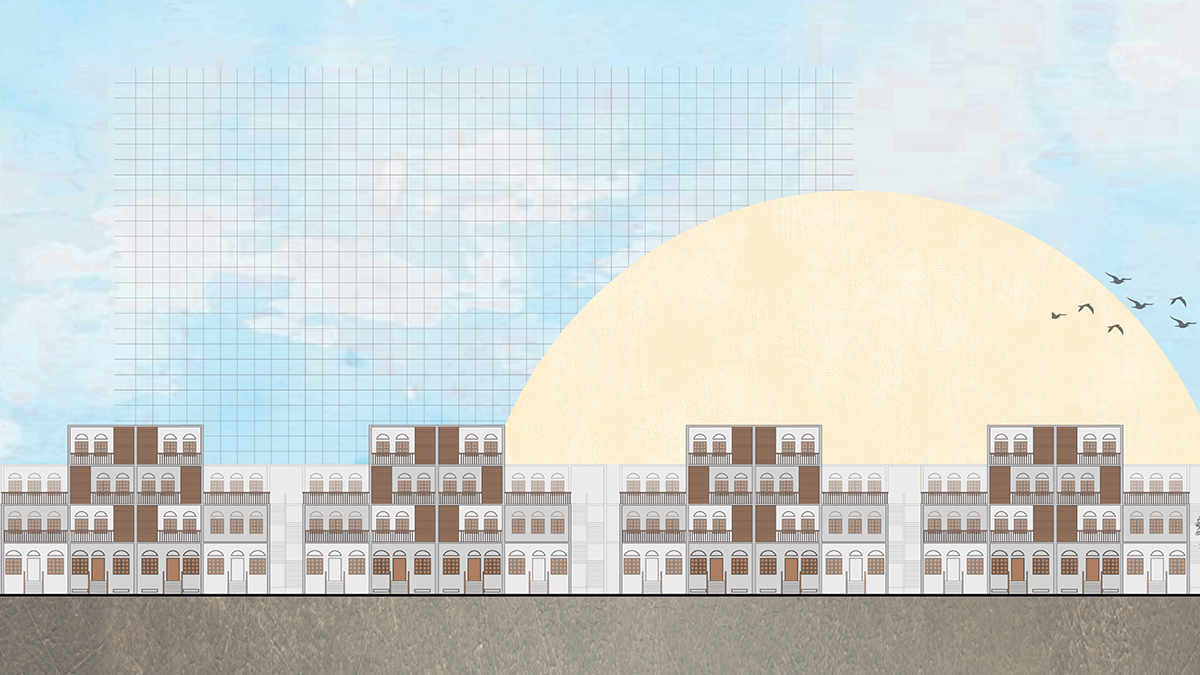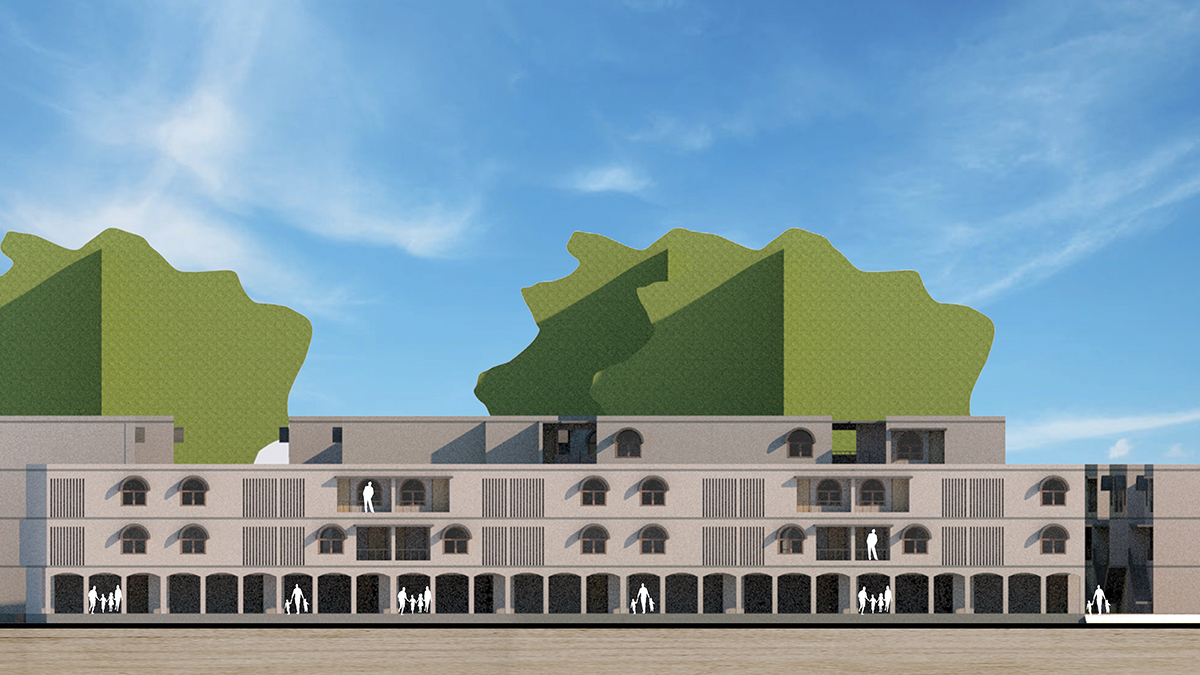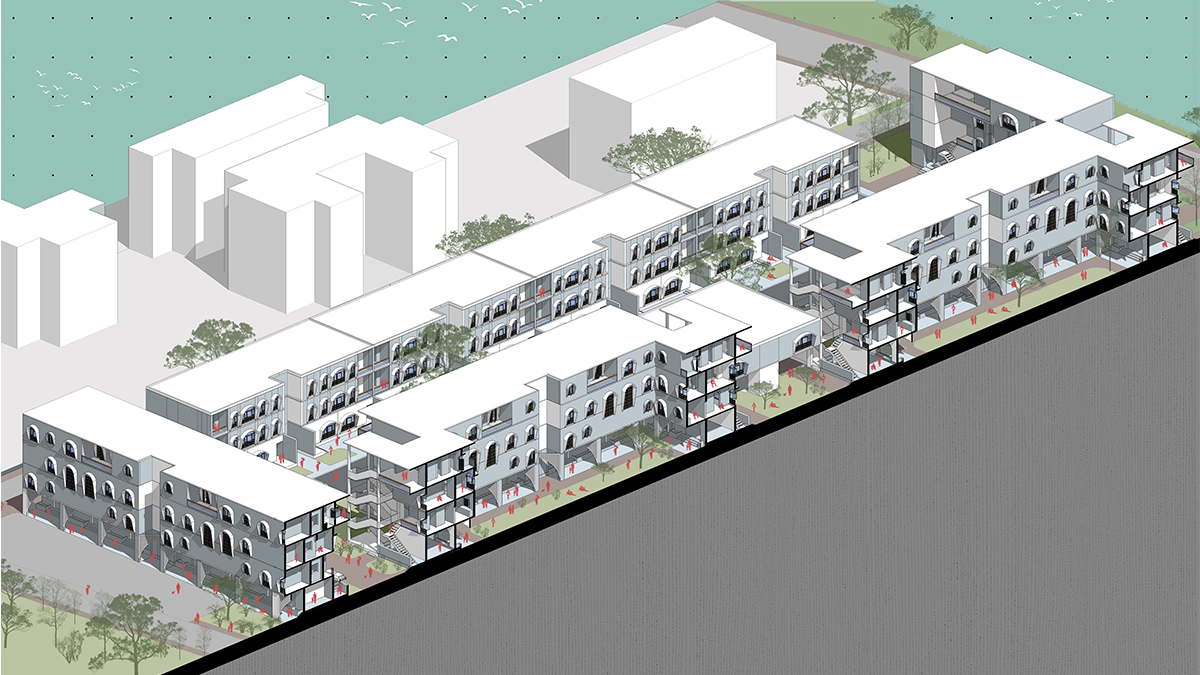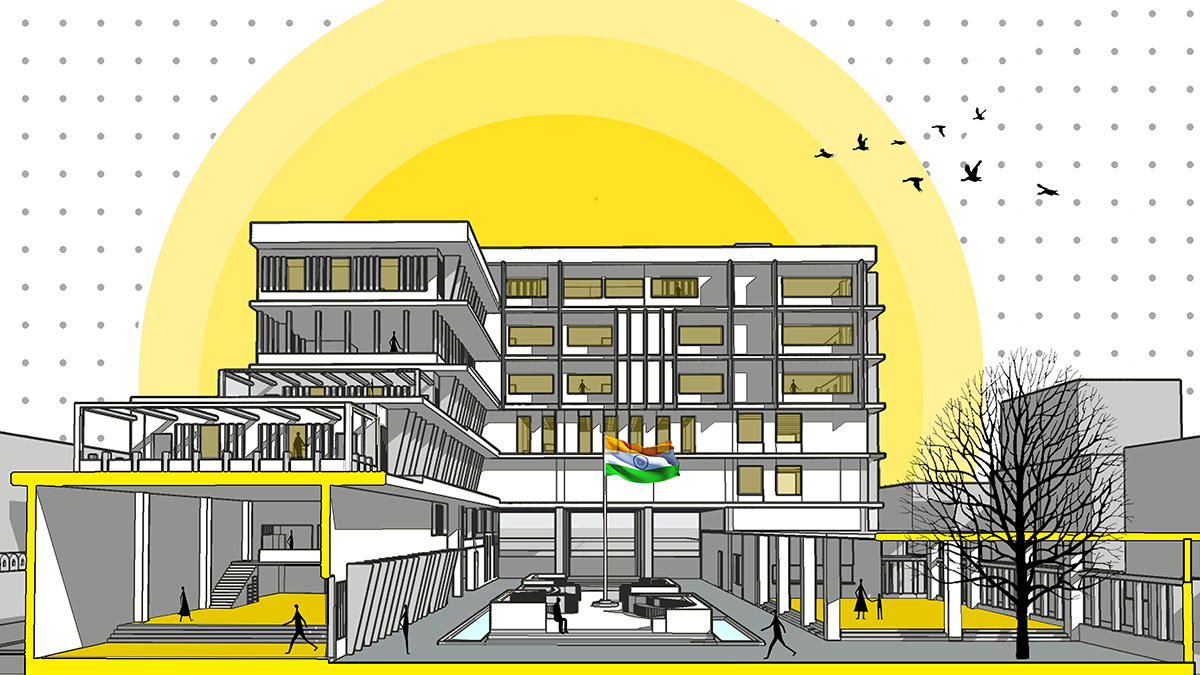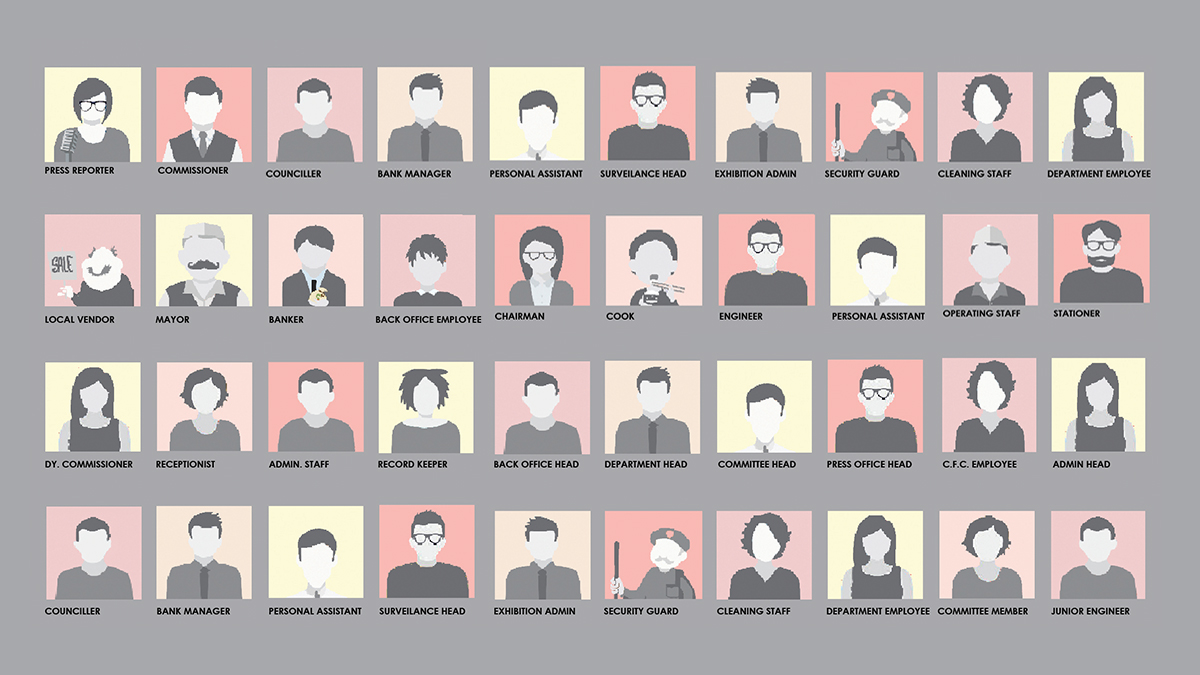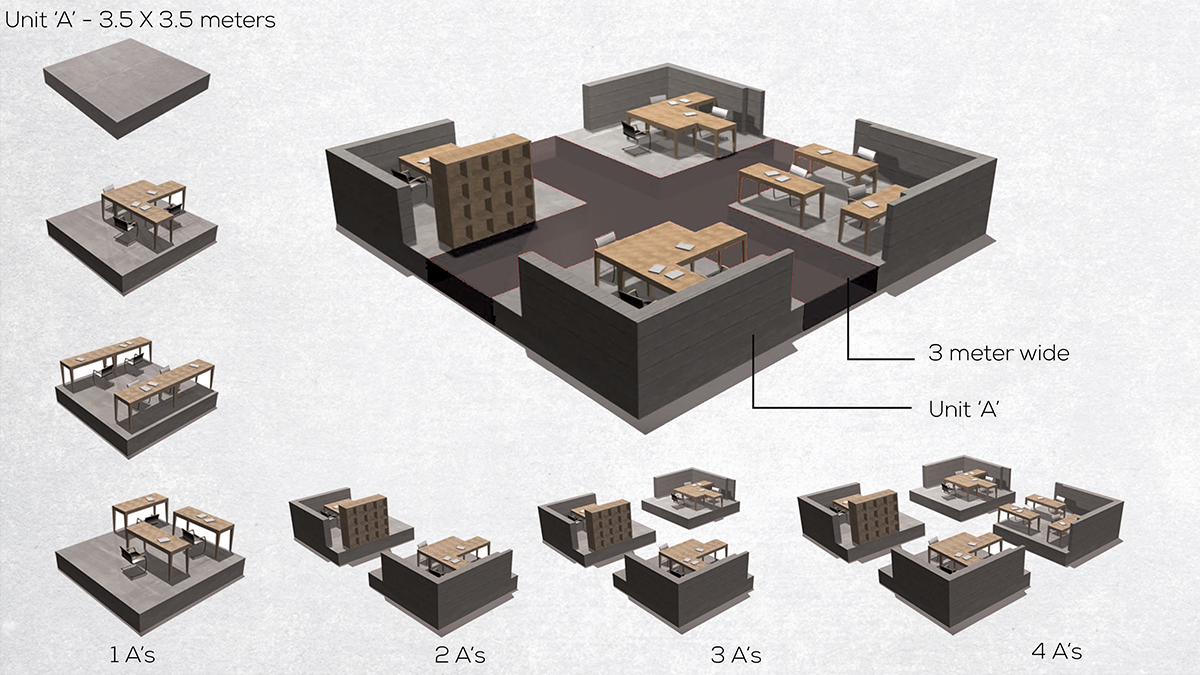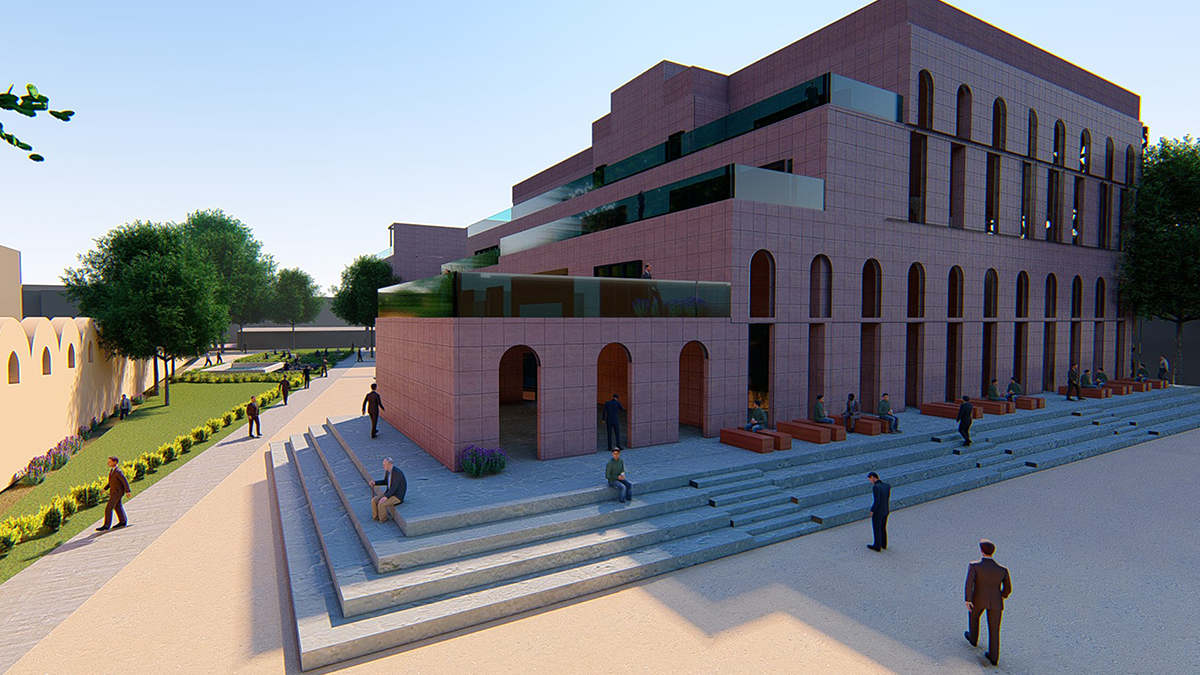Housing in Quaiserbagh: Kunal Bhatija
The Design aims at redefining the traditional architectural elements by designing them in a modern way. Considering the idea of traditional forts and palaces having a huge central courtyard at the entrance, the Nagar Nigam is divided into 3 zones: Public, Private, and Semi-Private with a maximum visual connection between them. The rhythm of having continuous jaali on the facade in traditional architecture is designed in a modern way that facilitates daylight to all the interior public spaces and offices and provides views towards the surroundings and the central courtyard.

